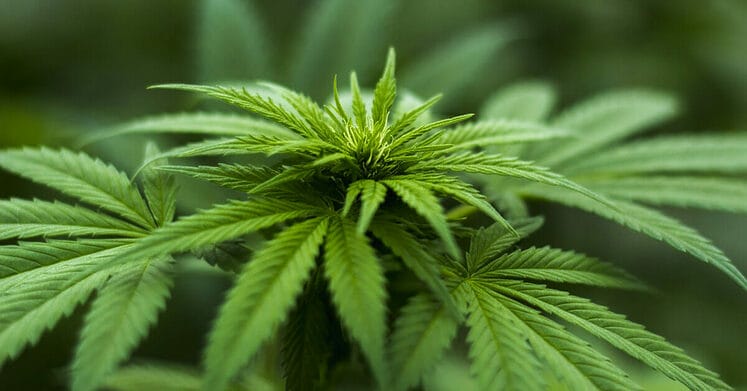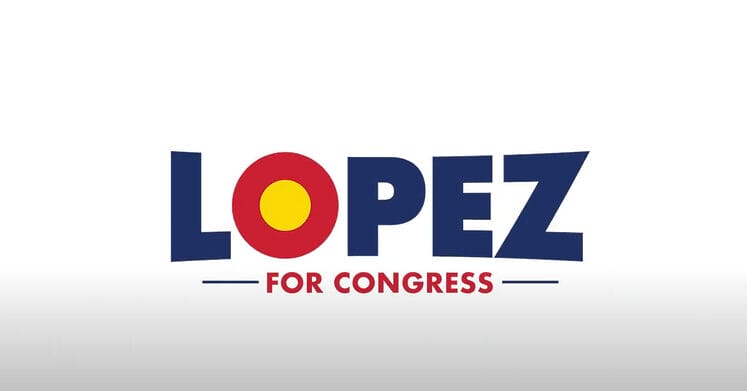
Conservatives and Christians do not understand cannabis, to their political detriment and medical disadvantage. Their misunderstanding results from trusting authoritative and industry-captured public health agencies, and trusting mainstream media sponsored by the corrupt pharmaceutical industry. During the pandemic “Mask Madness,” we have all witnessed how most people will fall in line with virtue signaling, and only a minority has the grit required to reject prevalent public opinion promoted by authoritarian bureaucrats. In similar virtue signaling, it easy to demonize the intoxication effect of “marijuana” while ignoring that most SSRI prescription drugs have black box warnings for suicidal and homicidal ideation. This mindset is the product of decades of indoctrination of “Reefer Madness,” without actually studying cannabis research and interacting with the patients who use it. I write this article as a conservative, Christian, and cannabis consumer to inform on (1) the urban legend of marijuana, (2) the medical power of cannabis, (3) and the political costs for misinformed conservative candidates running for office.
The Urban Legend of “Marijuana”
First, we must address the false belief within the term “marijuana.” A plant named marijuana does not exist. The controversial plant’s name is actually Cannabis, (genus Cannabis). The lobby groups against cannabis needed a scary drug name to replace the plant name, and associate it with “weird parties, wild orgies, unleashed passions” (per a 1936 drug exploitation film called “Marihuana: weed with roots in hell.”) According to Wikipedia,
“The use of ‘marihuana’ in American English increased dramatically in the 1930s, when it was preferred as an exotic-sounding alternative name during debates on the drug’s use. It has been suggested that in the United States the word was promoted by opponents of the drug, who wanted to stigmatize it with a ‘foreign-sounding name.’ According to Lizzie Post, the word ‘marijuana’ is deprecated because ‘in the early 1900s, the term marijuana was purposely used to negatively associate it with the Latino community.’”
The belief that “marijuana is evil” is one of the longest running urban legends of modern time originating in 1936 and promoted by pharmaceutical companies and public health officials under the influence of the CDC, FDA, and NIH. The 1970s film, “Reefer Madness,” portrays high school students who are lured to cannabis as inevitably in addiction, crime, murder, and suicide. This film was originally funded by churches, taken over by a producer of exploitation films, and is now recognized as American propaganda. Nevertheless, Reefer Madness and similar propaganda were the only information that most people received on the topic of cannabis for generations.
Second, we must acknowledge that we stigmatize cannabis for the similar effects that prescription drugs have without stigma. Many people blame cannabis for the “irresponsible” intoxication effects that occur, without recognizing that many prescription drugs are also contraindicated with driving or operating heavy machinery. Personally, I am unfit to drive while taking over-the-counter Benadryl because my perception and reactions are impaired. IV Benadryl made me laugh uncontrollably as if I were “high,” but no one stigmatizes such treatment to prevent anaphylactic allergic reactions as “irresponsible.” But would most people think it was irresponsible of me to give cannabis to my son when he was a minor—a rescue spray to stop a seizure episode? Yes. I see the conditioned disapproval in the public reaction when I wear lifesaving cannabis logos on T-shirts. The reality is that people can over-medicate with any substance.
Third, we must understand toxicity. When a young adult becomes sick from “weed,” people attribute cannabis as being toxic. They disregard street formulations with unknown added chemicals. They do not consider if chemical solvents, clean alcohol, or CO2 were used in the extraction of the cannabis. In fact, there is no established toxic level of pure plant-based cannabis. Research has measured “intoxication levels” of cannabis, but has not established an “acute toxicity level.” We need to think more critically about source, dose, concentration, delivery route, and OTHER ingredients, included in edibles and concentrates. Any medication can be problematic, but we have been indoctrinated to virtue signal only against cannabis. People who use medical grade cannabis oils, sublingual sprays, or topical salves in correct dosing do not experience hallucinogenic or addictive properties, while these stereotypes of cannabis mostly originate from questionable sources and uncontrolled dosing of inhaled or edible forms. For peace of mind, there is a product called UNDOO designed for new users who do not know their product or personal threshold and who need to reverse the effects, and it should be in every paramedic’s aid bag. It would also be beneficial to educate young people and Emergency Room staffs that since it is illegal in the US to market cannabis to minors using names like “Trix” or “Airheads,” these black market products are likely toxic chemicals from China and do not contain cannabis as alleged on the packaging.
“The Medicinal Power of Cannabis”
The most concise overview of medical cannabis is contained in the 125 pages of “The Medicinal Power of Cannabis” by John Hicks, MD. The book includes 47 pages of references and a historical chapter on how hemp products were outlawed in the US because they were superior environmentally cleaner products in competition to three American empires: Hearst (paper), Dupont (petrochemicals, plastics, and paint), and Mellon (oil). Reefer Madness (1936) is believed to be the first form of yellow journalism with the goal to characterize all forms of hemp as a public health threat. In 1997, the Institute of Medicine (IOM) finally concluded that cannabis was safe and effective for medical uses, and states began legalizing it. This long overdue support from IOM appears to be motivated by the pharmaceutical lobby and cannabis patent that was filed the next year in 1998.
The most impressive power of cannabis is in treating cancer and AIDS. In 2015, I attended a seminar that detailed NIH research documenting that cannabis had kept cancer and AIDS in remission for 20 years in patients. Cannabis has unmatched antioxidant to counter the wasting that actually kills people with these diseases. Cannabis is a threat to the cancer industry of chemotherapy, radiation, and surgeries, which often result in a cancer reoccurrence in 5 years.
Cannabis is also an effective treatment to prevent and stop a seizure. This is lifechanging for families who risk daily threat of death or brain injury for a child. But the neuroprotective qualities of cannabis are best demonstrated in the treatment of dementia. In 2016, research demonstrated that “Cannabinoids remove plaque-forming Alzheimer’s proteins from brain cells.” Not only does cannabis prevent cell death in the brain, but the research has continued to show that cannabis treatment in Alzheimer’s Disease significantly decreases delusions, agitation/aggression, irritability, apathy, and caregiver distress. This begs the question of why the public has not been educated on medical cannabis, with 1 in 3 seniors dying from Alzheimer’s and 1 in 9 age 65 and older having Alzheimer’s according to the Alzheimer’s Association.
Is it probable that the modern empire of pharmaceutical lobbyists have captured public health to promote their profitable drugs and ghostwritten legislation to obstruct cannabis use? Is it possible that pharmaceutical companies have set up organizations like the American Cancer Society and the Alzheimer’s Association which will never find the cures because treatments are so profitable? History indicates the answers are yes.
How Conservative Candidates Lose the Unaffiliated Cannabis Community Vote
By will of the people through ballot initiatives, the Colorado Constitution was amended twice to legalize cannabis, medical (2000) and adult use (2012), commonly referred to as “recreational.” Any candidate running on a “I support the Constitution” platform should keep this in mind. Nevertheless, we see good people from respected institutions attacking cannabis during election years. I will use two recent high-profile examples to illustrate.
On June 25, 2022, Jeff Hunt, Director of Centennial Institute, tweeted: “The world is waking up to the FACT that marijuana and CBD is a con.” His evidence was an article titled “Scientists find little evidence that cannabis oils help end pain according to major study.” But when you read the actual cited study in the Annals of Internal Medicine, it concludes:
“Oral, synthetic cannabis products with high THC-to-CBD ratios and sublingual, extracted cannabis products with comparable THC-to-CBD ratios may be associated with short-term improvements in chronic pain”
The real problem with cannabis, if the reader gets past the deceptive headline of the UK Daily Mail article above, is that some countries have criminalized therapeutic doses of THC in cannabis products that compete with profitable pharmaceutical pain drugs:
“However, CBD products sold in UK shops can, by law, contain no more than 1mg of legally controlled cannabinoids such as THC. For a 30g bottle of CBD oil, that equates to about 0.003 percent THC.”
In the United States, cannabis is still classified as a Schedule 1 drug with “high potential for abuse and no medical value” and the FDA banned research on cannabis. (This is the same FDA that impeded the use of Ivermectin and Hydroxychloroquine while promoting the more profitable Remdesivir.) Meanwhile, the U.S. holds a patent on cannabis (approved in 2003) with evidence as an undeniable neuroprotectant and potent antioxidant, with exclusive rights to HHS and a pharmaceutical company. In 2018, this patent led to the FDA approving one cannabis-derived drug product (Epidiolox) in addition to three already approved synthetic cannabis-related drug products (Marinol, Syndros, Cesamet.) These pharmaceutical branded forms of cannabis are used in treatment for nausea and vomiting from chemotherapy and wasting syndrome in AIDS and are classified as Schedule 3 drugs without criminal penalties. These versions are only available with a prescription from a doctor. According to the patent, cannabis has powerful medical use, but use is reserved for a pharmaceutical sales monopoly and prohibited to local growers in most states:
“Cannabinoids have been found to have antioxidant properties, unrelated to NMDA receptor antagonism. This new found property makes cannabinoids useful in the treatment and prophylaxis of wide variety of oxidation associated diseases, such as ischemic, age-related, inflammatory and autoimmune diseases. The cannabinoids are found to have particular application as neuroprotectants, for example in limiting neurological damage following ischemic insults, such as stroke and trauma, or in the treatment of neurodegenerative diseases, such as Alzheimer’s disease, Parkinson’s disease and HIV dementia. Nonpsychoactive cannabinoids, such as cannabidoil, are particularly advantageous to use because they avoid toxicity that is encountered with psychoactive cannabinoids at high doses useful in the method of the present invention.”
It is noteworthy that Pharma’s cannabis-derived Epidiolox costs $982 for 60 milliliters, while an organic CBD product grown locally in Colorado costs $80 for 60 milliliters.
In another June 2022 example of conservative leaders attacking cannabis, Republican Gubernatorial Candidate and CU Regent Heidi Ganahl, during an interview with Truth & Liberty Coalition, verbalized equivalence of a fatality caused by “Xanax coated in Fentanyl” (a prescription drug coated in a street drug) to marijuana (a plant.) On the campaign trail, Ganahl repeatedly blamed the lockdown-induced mental health crisis on marijuana and criticized “pot shops” staying open. Social media groups voiced backlash about these types of statements made by several conservative candidates, particularly among voters who hold medical freedom as their single-issue vote basis and in a state where Republicans must win independent voters.
With Constitutional protected cannabis in Colorado, it would be wise for leaders to get input from cannabis customers and educate themselves. During the lockdowns, I visited a Denver dispensary to support a friend who needed cannabis. CDPHE’s COVID rules for dispensaries at the time required people to wait outside in the parking lot, 6 feet apart in a line, in adverse weather, with only one customer allowed inside the building. This is callous treatment of ailing people. I talked to patients waiting in line, and not one was there “to get high.” (Although, many other adults over-medicated in beer and wine in their homes during the lockdowns without stigma). Patients sought cannabis for anxiety, pain, Crohn’s disease, MS, and a family member with a neuro-degenerative disease. Does this situation appear to be “recreational” motivated or right-to-try motivated when everything else has failed a desperate person with a chronic health condition? Often people use “recreational” cannabis products from a dispensary to avoid the doctor’s fees and application fees required for a medical card, and to evade the state registry due to employer prohibitions on any type of cannabis use.
Conclusion
As conservatives, we need to learn to walk alongside with the mentally and physically broken—now more than ever. There are some churches which do not allow cannabis users to serve in church leadership, without any knowledge about the God-given human endocannabinoid system which has over 70 known pathways in which plant-based cannabinoids can respond to endogenous and environmental insults. Cannabis users are veterans with PTSD, who can successfully wean off harmful opioid drugs. Cannabis users are parents of children with autism and seizure disorders, who can wean off pharmaceutical drugs with severe adverse effects. Some of these families are medical refugees, who moved to Colorado from other states for medical freedom. It is difficult for people who do not have medically fragile people in their lives to open their minds after decades of indoctrination against “marijuana.”
I have advocated in Colorado for ten years to gain statewide grassroots support for a medical freedom resolution which was finally added to the Colorado Republican Party Platform in 2022. If we support medical freedom to reject any drug, then we must also support freedom to access alternatives like cannabis, despite pharmaceutical industry sponsored stigmas. The Democrat party understands cannabis, and how they must restrict its use to protect the profitable Pharma monopoly. This is why they deceived many Republicans to support HB21-1317 under the guise of curbing illegal teen use of “high potency THC in marijuana.” In effect, HB21-1317 created a new requirement of “prescriptions” which make it federally illegal for Colorado doctors to write medical recommendations for cannabis as a Schedule 1 drug, as explained in the lawsuit against Gov. Polis. HB21-1317 did not prevent teens from buying excessive “recreational” cannabis or toxic chemicals from China in any way. HB21-1317 severely limited access to medically fragile patients in Colorado, with the support of uninformed Conservative legislators who excluded “irresponsible” families like mine from having a seat at the table.









Responses
What can I say but thank you!
I have shared this with two Missouri Conservatives I know who are supporters, former Speaker of the House Tim Jones and current State Representative Nick Schroer. Of course, I’ve shared it elsewhere as it is packed full of information. I will also add The Medicinal Power of Cannabis” by John Hicks, MD to our library.
As someone who is disabled, from physical (EDS, IBS, arthritis…) to mental (anxiety…), and as someone who has suffered severe paradoxical reactions to prescribed conventional meds (I’m also a DES Daughter!), I appreciate the efficacy of Cannabis–it even helps with the tremors I’ve developed from the myriad of bad prescription psychotropic, mood-stabilizing drugs pushed on me and against my wishes! Too many doctors don’t listen.
Thank you for a very comprehensive article! It is appreciated!!